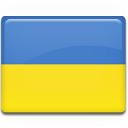Анотація українська

В загальній частині книжки описано морфологію дорослих, личинок та яєць напівтвердокрилих родини хижачиків, або ж редувіїд. Розглянуто еволюційну спорідненість родини з іншими родинами напівтвердокрилих та зв’язки її європейських і позаєвропейских підродин і триб між собою. Проаналізовано особливості зоогеографії, стаціального розподілу, живлення, життєвих циклів, взаємодій з біо- та абіотичними факторами, санітарного та сільськогосподарського значення європейских та багатьох позаєвропейских редувіїд. Охарактеризовано історію вивчення родини. У спеціальній частині наведено таблиці для визначення підродин, родів і видів всіх європейських і багатьох північно-африканських та близькосхідних редувіїд за дорослими і, в багатьох випадках, також за личинками та яйцями. Ці таблиці дубльовано англійською мовою.
Для кожної європейської підродини, кожного європейського роду і виду дано список синонімів, наведено найважливішу бібліографію та описи за дорослою і, в більшості випадків, за преімагінальними фазами, а також дані з поширення та автекології. Для кожної підродини наведено типовий рід, а для кожного роду – типовий вид. Для кожного європейського виду наведено колекції, де зберігаються типові особини як для валідного номінального виду, так і для його синонімів. Велику увагу приділено з’ясуванню меж мінливості видів.
Анотація англійська

A comprehensive morphological characteristic of adults, larvae and eggs of the heteropteran family Reduviidae (the assassin bugs) is given in the general part of the book. The systematic relationships of this family within the suborder Heteroptera as well as the interrelations of the various European and extra-European assassin-bugs subfamilies is considered. Then, the pecularities of the reduviids zoogeography, habitats, trophic connections, life cycles, interactions with the various biotical and abiotical agents as well as the sanitary and agricultural role of the assassin-bugs were analyzed. The history of the study of the family is presented. Keys to all European and many North-African and Fore-Asian reduviid subfamilies, genera and species are exposed in the special part of the book. The keys comprise adults and, in many cases, eggs and larvae too. These keys are repeated in English.
The list of synonyms and the principal sources as well as the description of the adult, larva and egg (if they are known) are presented for every European reduviid subfamily, genus and species. The distributional and autecological data as well as the taxonomic considerations concerning these taxa are presented. The type-genera are indicated for the subfamilies and the type-species are indicated for the genera. The depositaries of the type specimens of the valid nominal species as well as their synonyms are mentioned for all of European species. The limits of the infraspecific variation are considered for all species.